|
|
|
Cambridge University Press
|
The Anglican clergyman and founding member of the Society of the Holy Cross, Charles Maurice Davies (1828-1910), published Mystic London in 1875. The work is a collection of Davies' observations and researches into urban spiritualism. It includes descriptions of London mesmerists, mediums and seances, and discussions of Darwinism, secularism and the non-religious. Davies, who discovered spiritualism in Paris in the mid-1850s, and became a committed spiritualist after the death of his son in 1865, argued in this work that the principles and practices of spiritualism did not pose any threat to Christianity and that the two movements had much in common and could peacefully coexist. The work is an indispensable source on the presence of alternative religion in London and for the beliefs and practices of nineteenth-century spiritualists. It offers a fascinating insight into Victorian experiences and attitudes towards the occult and the supernatural. |
|
'Metaphor' is the phenomenon whereby we talk and, potentially, think about something in terms of something else. In this book Elena Semino discusses metaphor as a common linguistic occurrence, which is varied in its textual appearance, versatile in the functions it may perform, and central to many different types of communication, from informal interaction to political speeches. She discusses the use of metaphor across a variety of texts and genres from literature, politics, science, education, advertising and the discourse of mental illness. Each chapter includes detailed case studies focusing on specific texts, from election leaflets to specialist scientific articles. Also included is a detailed consideration of corpus (computer-based) methods of analysis. Wide-ranging and informative, this book will be invaluable to those interested in metaphor from a range of disciplines. |
|
Since his first appearance over sixty years ago, Mr Tompkins has become known and loved by many thousands of readers as the bank clerk whose fantastic dreams and adventures lead him into a world inside the atom. George Gamow's classic provides a delightful explanation of the central concepts in modern physics, from atomic structure to relativity, and quantum theory to fusion and fission. Roger Penrose's foreword introduces Mr Tompkins to a new generation of readers, and reviews his adventures in light of recent developments in physics. |
|
'Metaphor', a form of figurative language in which one thing or idea is expressed in terms of another, is becoming an increasingly popular area of study, as it is relevant to the work of semanticists, pragmatists, discourse analysts and also those working at the interface of language and literature and in other disciplines such as philosophy and psychology. This book provides a summary, critique and comparison of the most important theories on how metaphors are used and understood, drawing on research from linguistics, psychology and other disciplines. In order to ground the discussion in actual language use, the book uses examples from discourse, including casual conversations, political speeches, literature, humor, religion and science. Written in a non-technical style, the book includes clear definitions, examples, discussion questions and a glossary, making it ideal for graduate-level seminars. |
|
How are humorous meanings generated and interpreted? Understanding a joke involves knowledge of the language code (a matter mostly of semantics) and background knowledge necessary for making the inferences to get the joke (a matter of pragmatics). This book introduces and critiques a wide range of semantic and pragmatic theories in relation to humour, such as systemic functional linguistics, speech acts, politeness and relevance theory, emphasising not only conceptual but also interpersonal and textual meanings. Exploiting recent corpus-based research, it suggests that much humour can be accounted for by the overriding of lexical priming. Each chapter's discussion topics and suggestions for further reading encourage a critical approach to semantic and pragmatic theory. Written by an experienced lecturer on the linguistics of the English language, this is an entertaining and user-friendly textbook for advanced students of semantics, pragmatics and humour studies. |
|
This book presents computational mechanisms for solving common language interpretation problems including many cases of reference resolution, word sense disambiguation, and the interpretation of relationships implicit in modifiers. The proposed memory and context mechanisms provide the means for representing and applying information about the semantic relationships between entities imposed by the cultural context. The effects of different 'context factors', derived from multiple sources, are combined for disambiguation and for limiting memory search; the factors having been created and manipulated gradually during discourse processing. |
|
Matrix Algebra is the first volume of the Econometric Exercises Series. It contains exercises relating to course material in matrix algebra that students are expected to know while enrolled in an (advanced) undergraduate or a postgraduate course in econometrics or statistics. The book contains a comprehensive collection of exercises, all with full answers. But the book is not just a collection of exercises; in fact, it is a textbook, though one that is organized in a completely different manner than the usual textbook. The volume can be used either as a self-contained course in matrix algebra or as a supplementary text. |
|
Human language is not the same as human speech. We use gestures and signs to communicate alongside, or instead of, speaking. Yet gestures and speech are processed in the same areas of the human brain, and the study of how both have evolved is central to research on the origins of human communication. Written by one of the pioneers of the field, this is the first book to explain how speech and gesture evolved together into a system that all humans possess. Nearly all theorizing about the origins of language either ignores gesture, views it as an add-on or supposes that language began in gesture and was later replaced by speech. David McNeill challenges the popular 'gesture-first' theory that language first emerged in a gesture-only form and proposes a groundbreaking theory of the evolution of language which explains how speech and gesture became unified. |
|
Mathematics has become indispensable in the modelling of economics, finance, business and management. Without expecting any particular background of the reader, this book covers the following mathematical topics, with frequent reference to applications in economics and finance: functions, graphs and equations, recurrences (difference equations), differentiation, exponentials and logarithms, optimisation, partial differentiation, optimisation in several variables, vectors and matrices, linear equations, Lagrange multipliers, integration, first-order and second-order differential equations. The stress is on the relation of maths to economics, and this is illustrated with copious examples and exercises to foster depth of understanding. Each chapter has three parts: the main text, a section of further worked examples and a summary of the chapter together with a selection of problems for the reader to attempt. For students of economics, mathematics, or both, this book provides an introduction to mathematical methods in economics and finance that will be welcomed for its clarity and breadth. |
|
This book provides a comprehensive overview of instituting change in language education programs. The paperback edition provides a comprehensive overview of the theory and practice of instituting change in language education programs. It offers a theoretical framework, a detailed case study, and nine principles for the management of educational innovation. |
|
A solid introduction to mathematical modeling for a range of chemical engineering applications, covering model formulation, simplification and validation. It explains how to describe a physical/chemical reality in mathematical language and how to select the type and degree of sophistication for a model. Model reduction and approximation methods are presented, including dimensional analysis, time constant analysis and asymptotic methods. An overview of solution methods for typical classes of models is given. As final steps in model building, parameter estimation and model validation and assessment are discussed. The reader is given hands-on experience of formulating new models, reducing the models and validating the models. The authors assume the knowledge of basic chemical engineering, in particular transport phenomena, as well as basic mathematics, statistics and programming. The accompanying problems, tutorials, and projects include model formulation at different levels, analysis, parameter estimation and numerical solution. |
|
This book is a rigorous, yet nonmathematical analysis of key macroeconomic issues faced by emerging economies. The first part develops an analytical framework that can be used as a workhorse model to study short-run macroeconomic issues of stabilization and adjustment in such economies, comparable to the IS-LM framework widely used in intermediate-level macroeconomics textbooks for industrial countries. The rest of the book considers fiscal issues, financial sector issues, and issues concerning exchange rate regimes and policies. In the fiscal area, the focus is on the formulation of intertemporal policies, i.e. fiscal sustainability, seigniorage, and the roles of central bank independence and privatization of public enterprises in achieving fiscal credibility. The analysis of the financial sector examines its role in promoting welfare and growth. Finally, the book explores recent developments in the theory of appropriate exchange rate regimes and management, and provides an overview of recent currency crises in emerging markets. |
|
Using a rigorous and concise framework, this book teaches the foundations of modern macroeconomic theory and its methods. It is ideally suited for students taking a first graduate course in macroeconomics as part of an MBA, finance, or economics degree. The book explains recent advances of modern macroeconomic theory with respect to growth, business cycles, and asset pricing by focusing on aspects of firm and household behavior that are embedded in modern macroeconomic studies. Throughout the book data issues are discussed in detail: where to find the data, how to download it, and the correspondence of data with model predictions. The mathematical level assumes that students have taken a course in calculus. With its emphasis on dynamic inter-temporal macroeconomics and the use of data, the book provides students with a core toolkit that will equip them both for more advanced study and for professional careers as economists. |
|
Representing one of the great traditions of Western philosophy, philosophy written in Arabic and in the Islamic world was inspired by Greek philosophical works and the indigenous ideas of Islamic theology. This collection of essays, by some of the leading scholars in Arabic philosophy, provides an introduction to the field by way of chapters devoted to individual thinkers (such as al-Farabi, Avicenna and Averroes) or groups, especially during the 'classical' period from the ninth to the twelfth centuries. |
|
We can only claim to understand another legal system when we know the context surrounding the positive law in which lawyers are trained. To avoid ethnocentricity and superficiality, we must go beyond judicial decisions, doctrinal writings and the black-letter law of codes and statutes and probe the 'deeper structures' where law meets cultural, political, socio-economic factors. It is only when we acquire such awareness and knowledge of the critical factors affecting both the backgrounds and implications of rules that it becomes possible to control the present and possibly future developments of the world's legal institutions. This collection of essays aims to provide the reader with a fundamental understanding of the dynamic relationship between the law and its cultural, political and socio-economic context. |
|
The Cambridge Companion to American Modernism provides a comprehensive and authoritative overview of American literary modernism from 1890 to 1939. These original essays by twelve distinguished scholars of international reputation offer critical overviews of the major genres, literary culture, and social contexts that define the current state of Modern American literature and cultural studies. Among the diverse topics covered are nationalism, race, gender and the impact of music and visual arts on literary modernism, as well as overviews of the achievements of American modernism in fiction, poetry and drama. The book concludes with a chapter on modern American criticism. An essential reference guide to the field, the Companion offers readers a chronology of key events and publication dates covering the first half of the twentieth century in the United States, and an up-to-date bibliography of further reading organized by chapter topics. |
|
This Companion volume provides a comprehensive overview of the major themes and topics pertinent to ancient Greek law. A substantial introduction establishes the recent historiography on this topic and its development over the last 30 years. Many of the 22 essays, written by an international team of experts, deal with procedural and substantive law in classical Athens, but significant attention is also paid to legal practice in the archaic and Hellenistic eras; areas that offer substantial evidence for legal practice, such as Crete and Egypt; the intersection of law with religion, philosophy, political theory, rhetoric, and drama, as well as the unity of Greek law and the role of writing in law. The volume is intended to introduce non-specialists to the field as well as to stimulate new thinking among specialists. |
|
Rhetoric thoroughly infused the world and literature of Graeco-Roman antiquity. This Companion provides a comprehensive overview of rhetorical theory and practice in that world, from Homer to early Christianity, accessible to students and non-specialists, whether within classics or from other periods and disciplines. Its basic premise is that rhetoric is less a discrete object to be grasped and mastered than a hotly contested set of practices that include disputes over the very definition of rhetoric itself. Standard treatments of ancient oratory tend to take it too much in its own terms and to isolate it unduly from other social and cultural concerns. This volume provides an overview of the shape and scope of the problems while also identifying core themes and propositions: for example, persuasion, virtue, and public life are virtual constants. But they mix and mingle differently, and the contents designated by each of these terms can also shift. |

|
The Cambridge Companion to Archaic Greece provides a wide-ranging synthesis of history, society, and culture during the formative period of Ancient Greece, from the Age of Homer in the late eighth century to the Persian Wars of 490-480 BC. In ten clearly written and succinct chapters, leading scholars from around the English-speaking world treat all aspects of the civilization of Archaic Greece, from social, political, and military history to early achievements in poetry, philosophy, and the visual arts. Archaic Greece was an age of experimentation and intellectual ferment that laid the foundations for much of Western thought and culture. Individual Greek city-states rose to great power and wealth, and after a long period of isolation, many cities sent out colonies that spread Hellenism to all corners of the Mediterranean world. This Companion offers a vivid and fully documented account of this critical stage in the history of the West. |
|
In the last fifty years Irish poets have produced some of the most exciting poetry in contemporary literature, writing about love and sexuality, violence and history, country and city. This book provides a unique introduction to major figures such as Seamus Heaney, and also introduces the reader to significant precursors like Louis MacNeice or Patrick Kavanagh, and vital contemporaries and successors: among others, Thomas Kinsella, Nuala Ni Dhomhnaill and Paul Muldoon. Readers will find discussions of Irish poetry from the traditional to the modernist, written in Irish as well as English, from both North and South. This Companion provides cultural and historical background to contemporary Irish poetry in the contexts of modern Ireland but also in the broad currents of modern world literature. It includes a chronology and guide to further reading and will prove invaluable to students and teachers alike. |
|